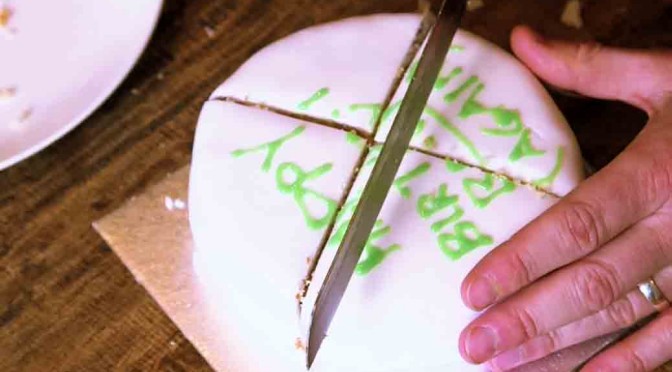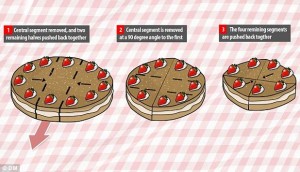By Anupum Pant
Background
For years the phrase “cake cutting” has conjured up just one image in my brain – A triangular section of the cake. This way of cutting a cake is so normal that even the tools (especially the spatula) that are made for cake cutting are made in a way that’d work with best when you are making that traditional triangular cut. Turns out, this method of cutting a cake which we’ve all know for years is totally wrong.
Why is it wrong?
It’s wrong mostly for mathematical loners. People who, on their birthday, have no one around to share the cake with, and cannot finish off the whole cake. For them and the ones who have to store the cake after cutting it, are extremely careful about how moist the edges remain when they next eat it, this right way to cut a cake might be of great importance.
The way we’ve always know is “wrong” because when you cut off, say a single section of the cake and decide to store the larger piece in the fridge, some internal part of the cake remains exposed and it dries off. So, the next time you cut off a piece near the area where you started, you’d get a freshly cut moist wall of cake on one side, and a repulsively hard dried up wall on the other. That, some think, is extremely unpleasant.
What’s the Right way?
About 100 years back, a brilliant Polymmath (and a mathematician), Sir Francis Galton, faced a similar annoyance. So, instead of cursing others for having invented an absurdly inefficient way to cut a cake, he decided to develop his own. He ended up developing a very simple and efficient cut which helped him keep the cake wall relatively moist. Here’s how the cut works. (Cut along the dotted line)
Describing his new way of cutting cakes, he got an article published in the Nature magazine (dated December 20th, 1906). “Cutting a Round Cake on Scientific Principles”
Alex Bellos from the Numberphiles describes it in a video below:




